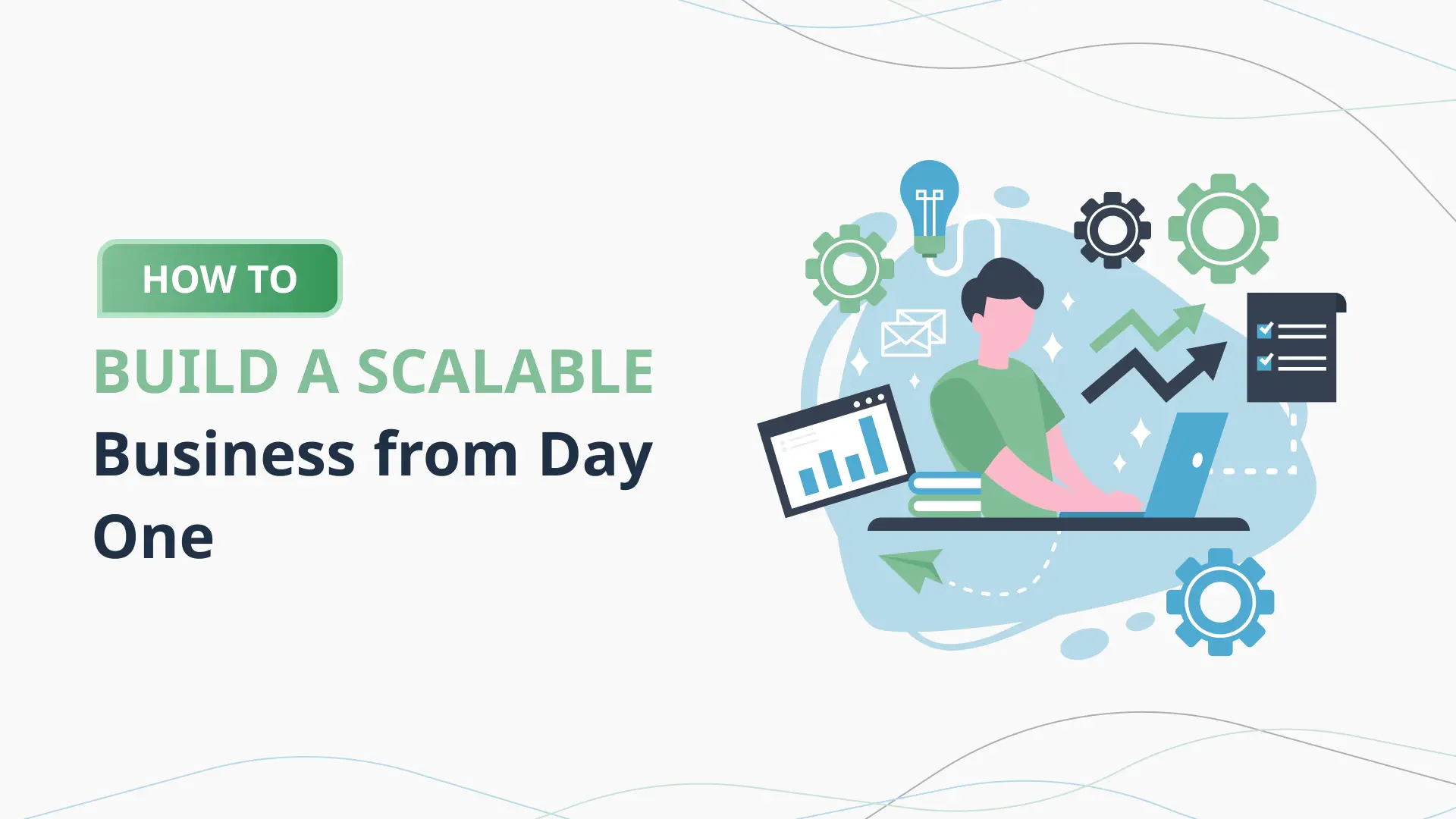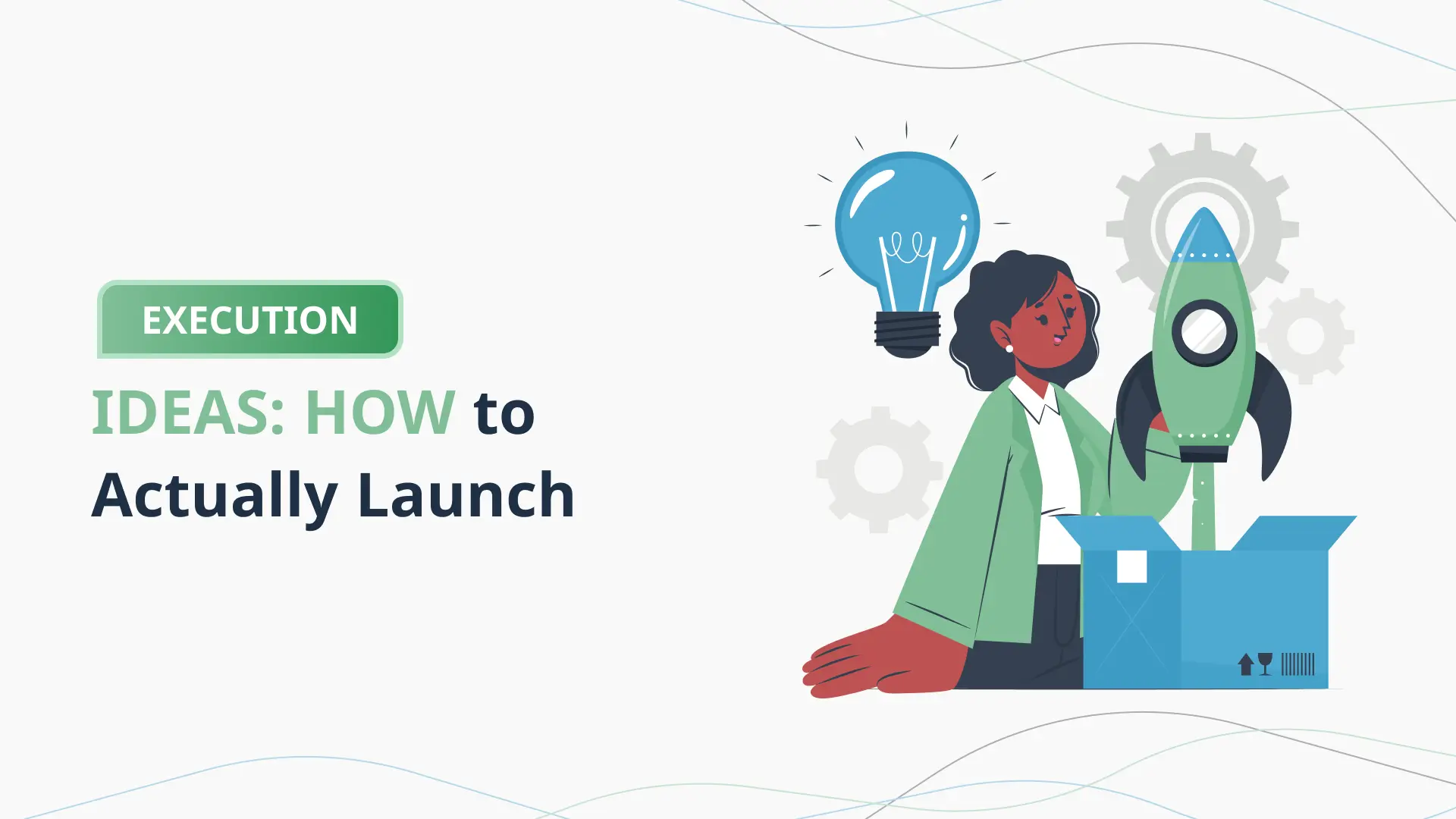Pivoting Your Startup: When and How to Do It

Introduction: Pivoting—A Lifeline for Startup Success
In the whirlwind world of startups, adaptability often spells the difference between success and failure. Entrepreneurs set out with bold visions and meticulously crafted plans, but the reality of the market can be unpredictable, challenging, and brutally honest. This is where the concept of a “pivot” becomes not just a consideration—but a lifeline.
Pivoting, in startup terms, refers to a strategic change in direction. It might involve tweaking the product, targeting a new customer segment, changing the revenue model, or even shifting the entire business focus. Far from signaling defeat, a pivot is often a courageous, calculated move toward greater alignment with market needs and long-term viability. It’s about recognizing what’s not working, reassessing assumptions, and making bold yet informed decisions to find a more promising path forward.
Take for example the now-iconic cases of Twitter and Instagram. Twitter began as Odeo, a podcasting platform that quickly lost relevance when Apple launched its podcast service. Faced with a looming dead end, the team brainstormed new ideas—and the microblogging concept that became Twitter emerged. Instagram’s roots trace back to Burbn, a location-based check-in app cluttered with features. After observing that users gravitated toward its photo-sharing functionality, the founders honed in on that singular feature and rebranded entirely. Both companies didn’t fail; they pivoted—and in doing so, transformed into global giants.
Such stories underscore a critical truth: pivoting isn’t about giving up. It’s about leveling up.
Still, the idea of pivoting can be daunting. Founders must grapple with sunk costs, emotional attachment to the original idea, and uncertainty about the new direction. Timing is crucial—pivot too early, and you might miss out on learning; pivot too late, and you risk running out of resources. Then there’s the “how” of it: Which type of pivot should you pursue? What are the warning signs that your current path isn’t working? And how can you manage the transition effectively without losing your team, your customers, or your sanity?
This blog post will serve as your comprehensive guide to pivoting in the startup landscape. We’ll dive into how to recognize when a pivot is necessary, explore the different types of pivots you can consider, analyze real-world examples, outline common challenges, and detail the transformative benefits a successful pivot can bring. Importantly, we’ll also highlight how powerful AI business plan tools—like the PlanVista app—can play a key role in making your pivot smoother, smarter, and more successful.
Whether you’re contemplating a pivot now or preparing for the possibility down the line, understanding the strategy behind pivoting can empower you to make confident, informed decisions. Let’s begin this journey of change, resilience, and renewed focus—because in the startup world, agility isn’t just an asset; it’s a necessity.
Recognizing the Need to Pivot
Pivoting is one of the most critical strategic decisions a startup founder can make. Yet, it’s often one of the hardest to recognize. The line between persistence and stubbornness can be razor-thin. How do you know when to double down versus when to change direction entirely? Understanding the early warning signs and having the humility to act on them can save your startup from running headfirst into a dead end.
1. The Elusive Product-Market Fit
One of the clearest indicators that a pivot might be necessary is a failure to achieve product-market fit. You’ve built a product, put it in front of your target audience, and… crickets. Maybe your user acquisition is sluggish, feedback is lukewarm, or retention is dismal. You might be solving a problem that’s too small, not urgent, or already being addressed more effectively elsewhere.
Founders often cling to the original vision, hoping that minor tweaks will bring the traction they’re looking for. But when data consistently shows that users aren’t engaging or converting, it’s time to step back. Your solution might be solid—but for the wrong problem or the wrong people.
2. Flatlining Metrics
Even if you initially gained traction, growth can stagnate or decline. Your monthly recurring revenue might plateau. New sign-ups might dwindle. Churn rates could creep upward. These are not just operational hiccups—they can be symptoms of deeper strategic misalignment.
In such cases, it’s crucial to ask: Is the market large and active enough? Has a competitor gained a better foothold? Has the technology landscape shifted? If you’re no longer progressing, it’s a cue to reevaluate your trajectory.
3. Pivot Goldmines: Customer Feedback and Usage Data
Sometimes, customers themselves tell you what to do—if you listen closely. Usage data and customer feedback can offer invaluable insights. Perhaps users are consistently using one overlooked feature while ignoring the core product. That’s not failure—it’s opportunity knocking. When Instagram realized users were obsessed with photo sharing and not checking in, they listened. That’s how they pivoted away from Burbn and toward success.
4. A Brighter Path Emerges
On occasion, the need to pivot comes not from failure, but from discovery. Maybe you’ve stumbled onto a new, more scalable idea while solving problems for your current user base. Perhaps a pilot feature is gaining unexpected traction. These are the “happy accidents” that can lead to game-changing pivots. Be willing to follow the momentum.
5. Internal Friction and Team Misalignment
Lastly, persistent disagreements within the team about direction can signal foundational issues. If your co-founders or core team are divided, it’s often because something fundamental isn’t working. Honest internal dialogues can unearth the need for a strategic realignment.
Recognizing the need to pivot is half the battle. The other half is having the courage to act. That’s where tools like PlanVista come into play. With its startup planning tools and AI business plan generator, you can analyze your current position, test new strategies, and map a path forward—all with data-driven clarity.
In the next section, we’ll explore the various types of pivots you can make and share real-world examples that bring these concepts to life.
Types of Pivots and Real-World Examples
Once you recognize the need to pivot, the next step is deciding how to pivot. Not all pivots are created equal, and the path you choose depends on what’s not working in your current strategy. Fortunately, the startup world is rich with examples of companies that didn’t just survive a pivot—they thrived because of it. Understanding the different types of pivots can help you choose the right approach and set the stage for a successful transition.
1. Customer Segment Pivot
Sometimes your product is fine—but your target customer isn’t. You might discover that another group of users, outside your original audience, gets more value from what you’ve built.
Example: Slack originally started as an internal communication tool for a gaming company. The game flopped, but the team noticed that their internal tool was hugely popular. They pivoted to focus on business communication, targeting teams and enterprises. Today, Slack is a staple in the workplace.
2. Problem Pivot
In this scenario, you realize that the problem you’re solving isn’t urgent or painful enough for users to pay for a solution. You might need to shift focus to a more pressing problem—sometimes within the same market.
Example: PayPal initially built software for PalmPilots. After observing user behavior, they discovered a stronger need for secure digital payments via email. That realization changed their trajectory—and reshaped online commerce.
3. Product Pivot
You might keep the same audience but offer a different product. This often happens when one feature outshines the rest, and you decide to double down on it.
Example: Instagram, originally Burbn, was a cluttered app that included check-ins, gaming, and photos. Users overwhelmingly loved the photo filters and sharing features. The team stripped away everything else and rebranded around that single feature.
4. Revenue Model Pivot
Sometimes the core product and audience are right, but the way you make money isn’t. Shifting from ads to subscriptions, freemium to premium, or transactional to recurring revenue can completely change your financial outlook.
Example: YouTube began as a dating site where users uploaded videos to attract potential partners. It didn’t take off. But users began uploading other types of videos—funny clips, tutorials, etc. The platform pivoted to user-generated content and adopted an ad-based revenue model, paving the way to becoming the video giant it is today.
5. Technology Pivot
Technology can either disrupt your business or enable it to evolve. If your product is built on outdated tech or if a new platform can deliver a superior experience, a tech pivot may be in order.
Example: Netflix transitioned from mailing DVDs to streaming, not just to modernize, but to scale and better meet changing consumer expectations. That pivot was fueled by broadband internet’s widespread adoption.
Each of these pivot types offers different paths to reorient your business. The key is to let the data guide your decisions—whether it’s user feedback, market trends, or usage analytics.
PlanVista, with its market analysis and business modeling tools, helps you test these pivot strategies before making costly changes. You can simulate scenarios, validate assumptions, and build a tailored plan for each pivot type.
In the next section, we’ll tackle the common challenges that arise during a pivot—and how to navigate them effectively.
Challenges in Pivoting
Pivoting may sound like a magic wand for turning around a struggling startup, but in reality, it’s more like reconstructive surgery—necessary, impactful, and sometimes painful. While a pivot can set your company on a path to success, it also comes with significant challenges. Understanding and preparing for these hurdles can mean the difference between a seamless evolution and a disastrous detour.
1. Emotional and Cognitive Biases
Founders often struggle with the emotional weight of pivoting. After months or years of hard work, it can be difficult to accept that the original idea isn’t working. This attachment is known as the “sunk cost fallacy”—the mistaken belief that because you’ve already invested heavily, you should stick it out.
This mindset can cloud judgment and delay necessary action. Overcoming it requires a shift in perspective: a pivot isn’t a failure; it’s an informed choice to pursue a more viable direction.
2. Resource Constraints
Startups operate under tight budgets and even tighter timelines. Pivoting often demands reallocating resources—time, talent, and capital—at a point when these are already stretched thin. You might need to hire new team members, invest in different technology, or halt a marketing campaign midstream.
This is where strategic planning becomes crucial. Tools like the PlanVista app can help by providing financial modeling features that assess whether your startup has the runway to execute the pivot—and what kind of ROI to expect if successful.
3. Internal Misalignment
Even when a pivot is clearly the right move, not everyone on your team may agree. Some team members may be attached to the original vision, or simply fear the uncertainty of change. Misalignment can lead to conflict, disengagement, and even turnover at a time when cohesion is most needed.
Clear communication and inclusive decision-making are key. By involving your team in the pivot strategy and using collaboration tools like those offered by PlanVista, you can foster buy-in and reduce friction.
4. Customer Confusion and Attrition
A pivot can disrupt the customer experience. If the product or value proposition changes too drastically, existing users might feel alienated. Even if the change is ultimately beneficial, the transition must be managed carefully to retain trust.
Communication is critical. Be transparent with your users. Frame the pivot as a response to their feedback, a step toward delivering more value, and involve them in the evolution through surveys or beta tests.
5. Market Uncertainty
Entering a new market or redefining your value proposition is inherently risky. What if the new direction fails too? What if the market isn’t as promising as it seemed?
That’s why validation is everything. Use market research tools, customer interviews, and MVP testing to de-risk your pivot. PlanVista can streamline this process with its data-backed market analysis capabilities and AI-driven business plan generator, helping you explore your pivot’s potential before diving in.
Every startup faces uncertainty, but those that embrace agility and plan their pivots methodically are more likely to come out ahead. In the next section, we’ll highlight the benefits of pivoting—and why it’s often the best move a startup can make.
Benefits of Pivoting
While pivoting is often framed as a response to failure, it’s more accurately a proactive move toward success. In fact, some of the most celebrated startups in the world only became successful because they pivoted at the right time. When done strategically, a pivot can breathe new life into your business, opening up opportunities that may have been invisible in your original trajectory. Let’s explore the major benefits of pivoting—and why embracing change can be your startup’s superpower.
1. Sharper Product-Market Fit
One of the most immediate benefits of pivoting is achieving a stronger alignment between what you’re offering and what the market actually needs. This often results in increased customer engagement, improved satisfaction, and a more compelling value proposition.
When your product genuinely solves a pressing problem for a clearly defined audience, everything becomes easier—marketing resonates more, sales cycles shorten, and customer retention improves. Pivoting to improve product-market fit turns your startup from a speculative gamble into a purposeful business.
2. Unlocking New Revenue Streams
Changing your business model or targeting a new customer segment can open doors to entirely new revenue streams. For instance, a consumer product that isn’t gaining traction might find massive success in the B2B market. Or a one-time purchase product could pivot into a subscription model, driving predictable, recurring revenue.
These financial advantages can significantly improve cash flow and make your startup more attractive to investors. Tools like PlanVista can help you map out these new revenue models and simulate financial outcomes with its AI business plan tool.
3. Gaining Competitive Advantage
The startup landscape is dynamic, and being the first to adapt to changing conditions gives you a critical edge. A well-timed pivot can differentiate your startup from competitors stuck in outdated models or saturated markets.
By pivoting to serve unmet needs or leverage emerging technology, you position your company as forward-thinking and responsive—qualities that both customers and investors highly value.
4. Renewed Team Focus and Morale
Interestingly, a successful pivot can also reinvigorate your team. When employees see that leadership is willing to make bold, strategic moves rather than clinging to failing ideas, it builds confidence and boosts morale.
Moreover, pivoting can clarify priorities. With a new direction often comes sharper focus, making it easier for teams to align and execute. PlanVista’s collaboration features ensure everyone stays on the same page during these transitions, fostering transparency and unified execution.
5. Stronger Investor Interest
Investors understand that startup journeys are rarely linear. They appreciate teams that can recognize when something isn’t working and have the insight to course-correct. A pivot, especially one backed by solid data and planning, demonstrates resilience and adaptability—two qualities that de-risk your startup in the eyes of investors.
When you can show how your pivot leads to clearer value propositions and scalable revenue models, you’re not just telling a better story—you’re offering a more compelling investment.
In summary, while pivoting can be challenging, the upside potential is enormous. When handled correctly, it can set your startup on a dramatically better course. In the next section, we’ll explore how the PlanVista app can be your secret weapon for planning and executing a high-impact pivot.
Leveraging the PlanVista App for a Successful Pivot
Pivoting your startup is one of the most high-stakes decisions you’ll make as a founder. It demands clarity, coordination, and a level of precision that’s often difficult to achieve under pressure. That’s where the right tools make all the difference. The PlanVista app, designed as a powerful AI business plan tool, is purpose-built to help founders navigate strategic shifts with confidence and data-driven insight.
Whether you’re reassessing your business model, exploring new customer segments, or preparing a pitch to investors, PlanVista can guide your pivot from an idea to a well-executed strategy. Here’s how:
1. Business Plan Generator: Clarify Your New Vision
When pivoting, you need a clear, compelling plan—not just for yourself, but for your team, investors, and stakeholders. PlanVista’s business plan generator allows you to map out your new strategy quickly and thoroughly. You can outline your revised value proposition, define your new customer personas, and articulate how your pivot aligns with market demands.
The AI helps you identify gaps in your thinking and suggests improvements, ensuring your plan is not just complete, but investor-ready. This is invaluable during times of transition, when speed and clarity are crucial.
2. Market Analysis: Validate Before You Leap
A successful pivot depends on timing and relevance. PlanVista helps you analyze market trends, competitor positioning, and customer behavior. These insights are critical when evaluating new opportunities and testing the viability of your new direction.
Instead of relying on gut instinct, you can use PlanVista’s built-in data analytics to validate your assumptions. If you’re moving into a new market segment or adopting a different revenue model, the app offers competitive intelligence and consumer insights to support your pivot with evidence.
3. Financial Modeling: Forecast Your New Future
Any strategic shift has financial implications—new costs, revenue potential, and cash flow dynamics. PlanVista’s financial modeling features allow you to project scenarios based on your new direction. Whether you’re shifting to a subscription model, entering a new market, or launching a new product, you can run simulations to understand how your pivot affects your bottom line.
This kind of forecasting helps you make smarter decisions and gives investors the numbers they need to back your strategy. It also helps prevent the costly surprises that often accompany major business changes.
4. Collaboration Tools: Align Your Team
Pivoting requires buy-in and coordination across your entire organization. PlanVista’s collaborative features ensure that everyone—from founders to marketers to developers—is aligned. You can share plans, gather feedback, and update progress in real time.
By maintaining transparency and communication, you can reduce confusion, increase morale, and accelerate execution. Everyone knows the “why” behind the pivot and their role in the new direction.
5. Streamlined Investor Communication
Finally, a pivot often means new funding needs. With PlanVista, you can generate pitch decks, financial statements, and executive summaries that are aligned with your revised business plan. This makes it easier to present a cohesive, confident case to current and prospective investors.
Conclusion: Embracing the Pivot—A Strategic Leap, Not a Last Resort
Pivoting isn’t a last-ditch effort to salvage a failing idea—it’s a strategic leap toward something better. In the ever-evolving startup landscape, rigidity is a recipe for obsolescence. Markets shift, customer needs evolve, and new technologies emerge. Startups that remain flexible and proactive are the ones that survive—and thrive.
From global giants like Twitter, Instagram, and Slack to lesser-known startups that quietly redefined their focus and flourished, the stories of successful pivots share common themes: courage, clarity, and action. These companies listened to their users, interpreted the data, and weren’t afraid to question their original assumptions. They didn’t just change for the sake of change; they pivoted with purpose.
As a founder, recognizing the need to pivot can be emotionally and strategically challenging. It demands a level of honesty about what’s not working and a vision for what could work better. But the rewards—renewed product-market fit, energized teams, competitive advantages, and stronger investor interest—make it one of the most impactful moves you can make.
This entire process, however, doesn’t have to be daunting. With the right tools, a pivot can be executed with precision, speed, and confidence. That’s where the PlanVista app becomes your trusted ally.
As a comprehensive AI business plan tool and startup planning platform, PlanVista offers everything you need to pivot intelligently. It helps you reassess your business model with its intuitive business plan generator, validate new directions with market analysis, forecast outcomes with financial modeling, and ensure team alignment through collaborative planning features.
The startup journey is a marathon of iterations. Each pivot brings you closer to the solution your market truly needs. So whether you’re just beginning to feel the pressure to change, or you’re already charting your new course, make sure you’re equipped with the right support system.
Here’s your call to action: Don’t wait until your metrics flatline or your runway vanishes. Start evaluating your direction today. Use the PlanVista app to test assumptions, gather insights, and design a business model built not just for survival, but for scale. The sooner you pivot toward value, the sooner you accelerate toward impact.
Because in the end, the best startups aren’t the ones that stick rigidly to their first idea—they’re the ones that adapt, evolve, and lead.
FAQs
A startup pivot is a strategic change in direction—such as modifying the product, target market, or business model—to better align with market needs and achieve growth.
Consider pivoting if you’re experiencing poor product-market fit, stagnant growth, user disengagement, or discover a more promising opportunity.
Common pivot types include customer segment, product, business model, problem, and technology pivots—each addressing different strategic needs.
Pivoting can improve market fit, unlock new revenue streams, boost team morale, and attract investor interest—positioning your business for long-term success.
PlanVista offers tools for business planning, market analysis, financial modeling, and team collaboration, helping founders execute smarter, more strategic pivots.










